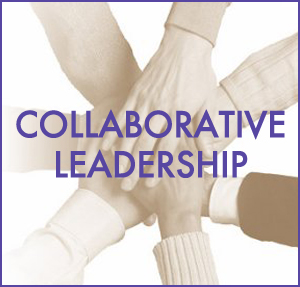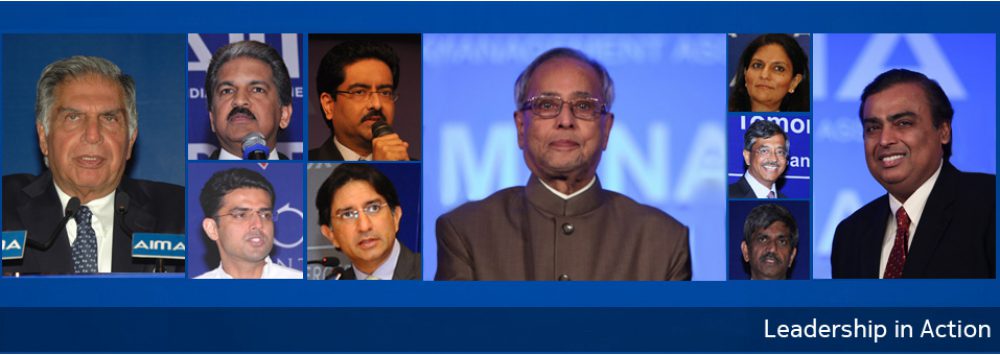 The Foundation of Collaborative Leadership
The Foundation of Collaborative Leadership
In an industrial age, people went to factories and worked together to produce the outcomes. When required, they collaborated in person. Supervisors commanded and controlled others and leadership was often equated with “taking power”. Factories depended heavily on rigid top-down hierarchies and people were viewed simply as dispensable workers.
With technological advances, our world of work changed dramatically. Today, we seldom do anything alone. With rise in knowledge oriented work, people in small and geographically distributed groups work together to create value through their expertise and creativity. There is no raw material, there are only people.
In this world of work, collaboration is not optional. In fact, effective collaboration is the backbone of how work gets done today. Most successful projects and teams I have seen have one thing in common – effective collaboration. They had one more thing in common – that one person with vision who believed in collaboration – a collaborative leader.
In this series of posts, we will look at what goes in to make collaborative leaders and their indispensable traits. Mary Parker Follett defined management as “the art of getting things done through people” and collaborative leadership embodies and extends this belief. It is about bringing diverse group of people together, have them share a common vision and provide them an eco-system where they effectively work with each other to produce desired outcomes optimally.
At the very foundation of collaborative leadership are respect for people, individual competence and engaging communication. Let us take a closer look at these.
Respect for People:
Effective collaboration starts with a simple belief that people are not “resources” or “capital” – they are not just a variable cost to your company. They are essentially humans who bring their self-esteem, emotional skills and intellectual capabilities to accomplish their work. That they want to be trusted, communicated with and inspired. Karen Martin, my friend and author of the recent book “The Outstanding Organization” says, “Organizations are not machines – they are fundamentally and irreducibly made up of people.” Respect for people imply that a leader is interested in (and enjoys) dealing with people, listening to them, help them navigate through challenges of work, solve their problems and invest time in developing their skills. Respect for people also means that a leader is able to provide the required space to people without compromising on the accountability. It means that a leader looks at conflicts as a way to improve.
Competence:
Collaboration is almost never a substitute of competence. At an individual level, a leader cannot foster collaboration and solve team’s problems without having the necessary skills and capabilities. For a leader, competence does not necessarily mean only technical skills. It also means higher visibility into work and how it fits into larger scheme of things. It means knowing how to communicate effectively and deal with problems. Competence also equates with an individual’s integrity – the extent to which thoughts, words and deeds of a leader are uniform. An integral leader quickly builds trust which is the currency of a collaborative team.
Engaging Communication:
If trust is the currency of a collaborative team, communication is the way to build it. It is only when a team frequently communicates, provides clarity, clarifies vision, shares ideas, extends their lessons and outlines problems clearly that they can really collaborate. Leaders in a collaborative environment need to be transparent and conscious about cultural aspects of communication. They need to offer a compelling view of the future (vision) to engage the energies of people. Along the way, they need to reiterate the vision, keep the team focused and resolve conflicts. They also need to be aware that communication is not just about what they speak, but also about what their actions speak.
With these fundamental elements in perspective, we will explore essential traits of collaborative leaders and related examples in the subsequent posts.
Join in the conversation: How would you define collaborative leader? What are your thoughts on how people are treated within organizations today?
Tanmay Vora is a quality evangelist, consultant, blogger and author who is passionate about excellence, leadership & people. He speaks/consults on quality, improvement and leadership and hosts QAspire Blog. In 2012, he was recognized by Society of Human Resources Management as “Top 20 Indian HR Influencers on Social Media”. Tanmay is the author of #QUALITYtweet and has contributed his writing to several blogs, magazines and books. He tweets as @tnvora.
The views & opinions expressed within these guest posts are those of the author alone and do not represent those of AIMA. The copyright of this content belongs to the author and any liability with regards to infringement of intellectual property rights remains with them.




Collaborative Leadership and Relationship Management were the top two qualities or capabilities that Directors of organisations involved in large business partnerships would have liked to have had more access to when setting up or running a partnership
Collaborative leadership is really defined by a process, rather than by what leaders do
Leadership of a collaborative refers to taking a leadership role in a coalition, organization, or other enterprise where everyone is on an equal footing and working together to solve a problem, create something new, or run an organization or initiative.